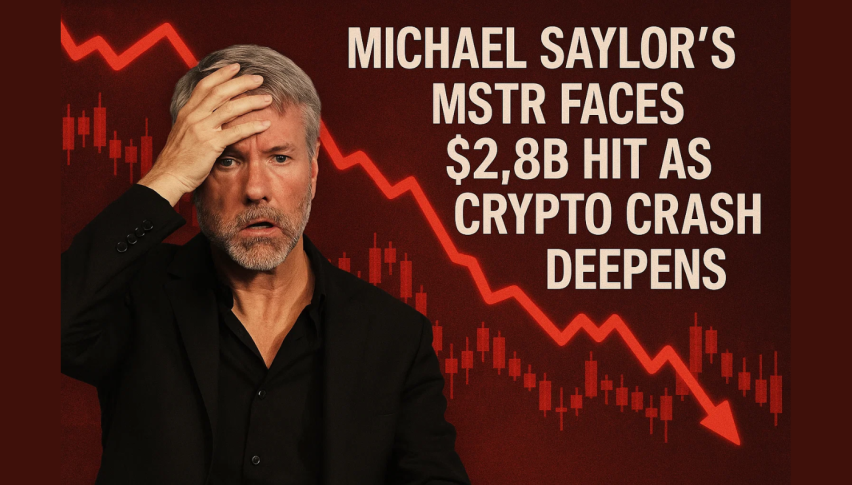BTC Price Forecast: Buying at Support After a $1T Shock and Cloud Outage?
After wiping out more than $1 trillion in total value, the cryptocurrency market stabilized over the weekend as Bitcoin found support at key

Quick overview
- The cryptocurrency market stabilized after a significant downturn, with Bitcoin finding support around $82,000 and rebounding to over $87,000.
- Despite recent volatility, institutional interest in Bitcoin remains strong, with significant inflows into U.S. spot Bitcoin ETFs and major investments from entities like Harvard University.
- A recent Cloudflare outage highlighted vulnerabilities in Web3 infrastructure, affecting multiple platforms including major crypto exchanges.
- Favorable macroeconomic conditions and potential regulatory shifts are contributing to a positive outlook for Bitcoin, with projections suggesting it could reach $170,000 by 2026.
Live BTC/USD Chart
After wiping out more than $1 trillion in total value, the cryptocurrency market stabilized over the weekend as Bitcoin found support at key technical levels and staged a modest rebound.
Extreme Volatility Sends Bitcoin Toward $80,000
The past week brought an intensified wave of selling across the crypto space, pushing Bitcoin down toward the $80,000 area as investors broadly exited risk assets. This downturn unfolded in sync with weakness in global equity markets and did not require any new fundamental trigger to set it into motion. Fear-driven trading was enough to accelerate the drop.
Bitcoin slipped below the $81,000 region as the broader market slid further into negative territory. This move followed a powerful rally earlier in the cycle that had seen the asset reach a record high near $126,000 in October. Since that peak, momentum has steadily faded, with Friday proving especially harsh as broader market instability dragged crypto lower with it.
By the time the weekend arrived, the market had erased approximately $1 trillion in value. However, the downward momentum finally began to lose steam as technical support zones came into play, setting the stage for a potential recovery.
Key Technical Levels Absorb Selling Pressure
Even as prices weakened, the broader technical structure remained relatively intact. Bitcoin fell beneath the 50-week Simple Moving Average, a level that has historically acted as a springboard for major bullish cycles. While breaking below this indicator sparked concern, the selloff failed to breach deeper structural support.
The 100-week Simple Moving Average, highlighted in green and located near $82,000, successfully held as a foundation. This area absorbed a large portion of selling pressure and prevented a more severe breakdown. Beneath it, the April low of roughly $74,000 continues to represent a key demand zone in the longer-term outlook.
BTC/USD Chart Weekly – The 100 SMA Held As Support
By Sunday, buyers had returned to the market. Bitcoin rebounded strongly, climbing back above $87,000 and signaling that bearish control may have reached exhaustion for now. This recovery also aligned with oversold conditions on momentum indicators such as the stochastic oscillator, which often precedes a bullish reversal.
Adding to the positive technical picture, more than 45,000 BTC have been transferred to cold storage since early October. This ongoing reduction in exchange balances suggests tightening supply, a factor that historically supports upward price pressure. If momentum continues to improve, potential upside targets include a revisit to $100,000 and eventually the $110,000 level.
Infrastructure Outage Exposes Web3 Weak Points
On 18 November, a significant outage struck Cloudflare, briefly disrupting a large portion of internet infrastructure. At its peak, at least 20% of global internet traffic was affected, creating ripple effects across multiple industries.
Major platforms such as X, OpenAI’s website, Spotify, Amazon Web Services, Uber, and the video game League of Legends experienced interruptions. The crypto sector was not spared, with Coinbase, the Base L2 network, Robinhood, and BitMEX all experiencing operational issues.
Ledger also faced temporary disruptions, while several blockchains, including TON, Cardano, and Filecoin, were impacted according to analytics reports. The outage, although short-lived, highlighted ongoing vulnerabilities within Web3 and centralized infrastructure dependencies. Once services were restored, market sentiment improved gradually.
Institutional Momentum Remains a Powerful Driver
Despite the volatility, institutional participation in Bitcoin continues to accelerate. U.S. spot Bitcoin ETFs recorded approximately $2.7 billion in inflows in early November alone. BlackRock’s IBIT and Fidelity’s FBTC dominated demand during this period.
IBIT now holds close to 800,000 BTC and is approaching $100 billion in assets under management, making it the fastest-growing ETF in U.S. history. Harvard University strengthened its exposure by tripling its IBIT holdings to 6.81 million shares, valued at more than $440 million before the recent dip. This position has surpassed its investments in Microsoft, Amazon, and even gold.
Meanwhile, JPMorgan analysts point to Bitcoin’s estimated $94,000 production cost as a natural support level under current market conditions. Their longer-term outlook projects Bitcoin approaching $170,000 by 2026, driven by decreasing volatility and its potential to compete directly with gold’s market capitalization.
Policy Shifts and Global Interest Support the Narrative
Macroeconomic conditions also continue to align favorably. The Federal Reserve’s recent 25 basis point rate cut has renewed appetite for risk assets, improving the broader environment for cryptocurrencies.
In the political arena, President Trump’s decision to pardon Binance founder Changpeng Zhao has been interpreted as a signal of a more supportive regulatory future in the United States. On the international front, countries including Thailand and Malaysia are examining the possibility of holding Bitcoin as part of national reserves, a move that could significantly accelerate adoption.
As a result, although the market has experienced a severe shakeout, the underlying trend continues to be shaped by strong institutional commitment, evolving policy support, and growing global acceptance.
Bitcoin Live Chart
- Check out our free forex signals
- Follow the top economic events on FX Leaders economic calendar
- Trade better, discover more Forex Trading Strategies
- Open a FREE Trading Account




